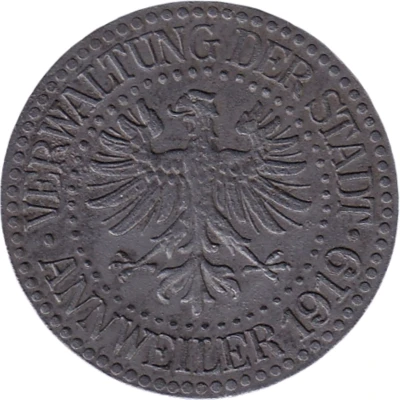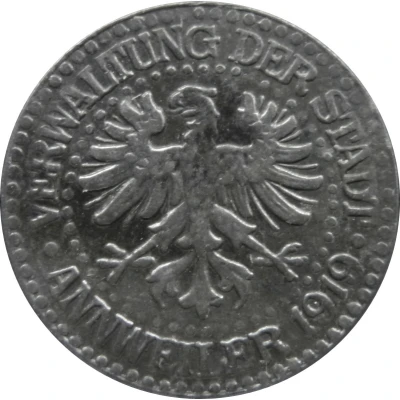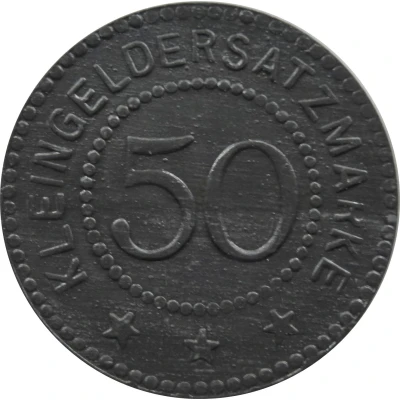


© gyoschak (CC BY-NC-SA)
10 Pfennigs - Annweiler
1919 year| Zinc | 1.00 g | 20.0 mm |
| Issuer | City of Annweiler (Federal state of Bavaria) |
|---|---|
| Period | Weimar Republic (1918-1933) |
| Type | Standard circulation coin |
| Year | 1919 |
| Value | 10 Pfennigs (10 Pfennige) (0.10) |
| Currency | Mark (1914-1924) |
| Composition | Zinc |
| Weight | 1.00 g |
| Diameter | 20.0 mm |
| Thickness | 1.13 mm |
| Shape | Round |
| Technique | Milled |
| Orientation | Medal alignment ↑↑ |
| Demonetized | Yes |
| Updated | 2024-10-04 |
| Numista | N#54185 |
|---|---|
| Rarity index | 76% |
Reverse
Pearl rim, legend surrounding rope circle with denomination centered
Script: Latin
Lettering:
KLEINGELDERSATZMARKE
10
★ ★ ★
Edge
Plain
Comment
Issuing authority: [Stadt, Pfalz]Interesting fact
The 10 Pfennigs - Annweiler 1919 coin from the City of Annweiler in Bavaria, Germany, is interesting because it was issued during a time of economic turmoil in Germany following World War I. The coin was made of zinc, which was a cheaper alternative to traditional metals like copper or silver, and it weighed only 1.00g, making it a lightweight and portable option for everyday transactions. Despite its small size and value, the coin remains a valuable collector's item today, with some mint conditions selling for hundreds of euros.



